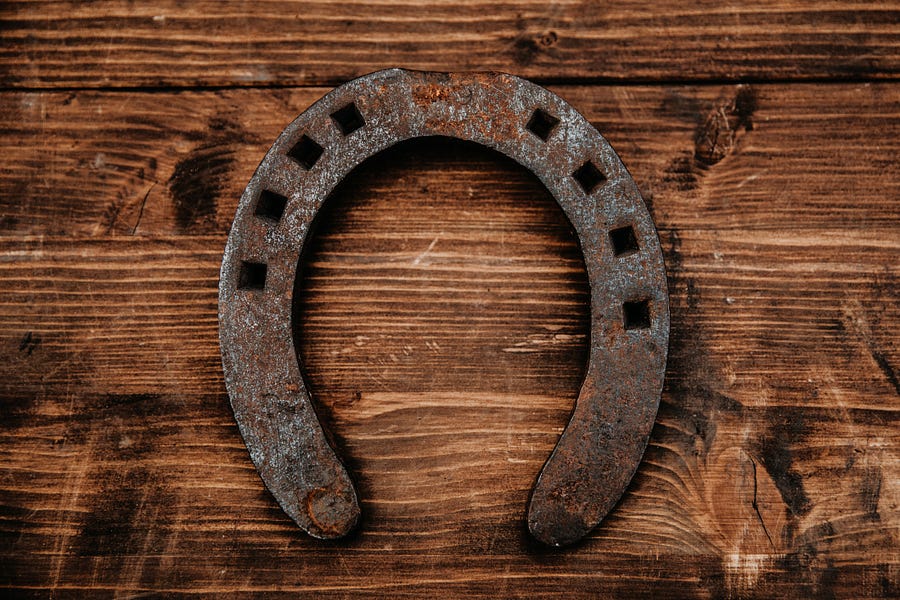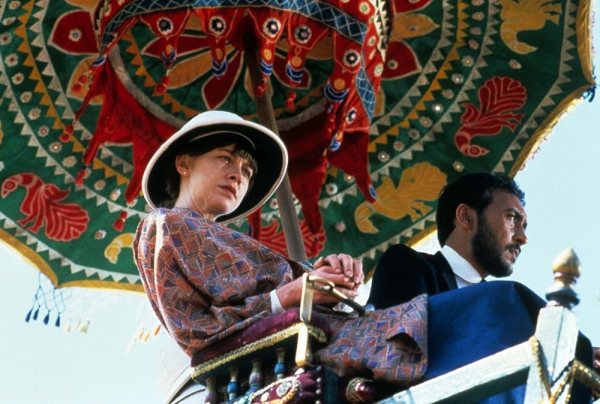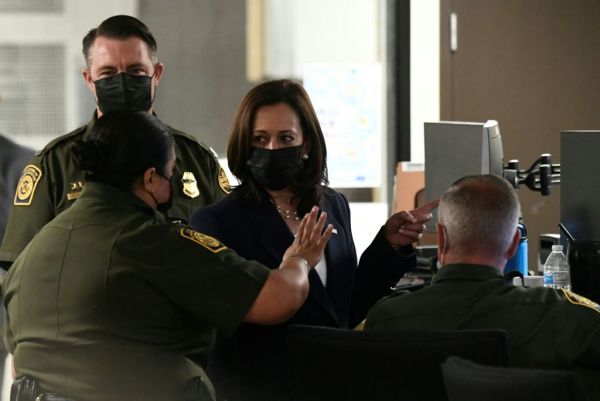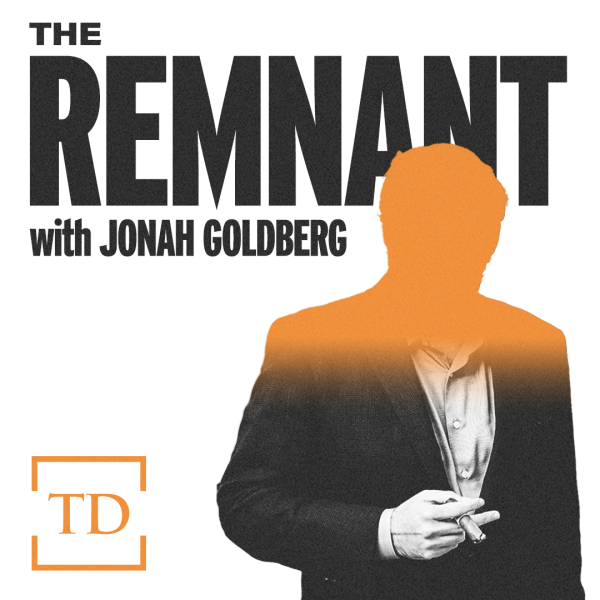I’d like to introduce you to a term you need to know (indeed, many of you no doubt know it already). It’s “horseshoe theory,” and its short definition is relatively simple. As political movements grow more extreme, they grow more alike. Like a horseshoe, they bend closer together.
A classic example of horseshoe theory is represented by 20th-century European clashes between fascists and communists. It’s not that there aren’t differences between fascism and communism, it’s that in their totalitarian reality, the two competing regimes created quite similar conditions on the ground.
Thankfully the American manifestations of horseshoe theory haven’t created anything remotely like the fascism and communism that led to history’s bloodiest war, but we’re seeing horseshoe theory emerge nonetheless, and its left-wing and right-wing manifestations have settled on the same target—American classical liberalism.
By “American classical liberalism,” I mean the specific structure of government created by the founding generation, modified and expanded through the Civil War Amendments, affirmed and extended through judicial precedent. While this constitutional structure is malleable enough to accommodate a wide variety of social, economic, and foreign policy choices, at its heart it is defined by a commitment to individual liberty, equality under law, and democratic government.
On the left, the challenge most prominently comes from a series of critical theory-influenced ideologies that fundamentally reject that American founding (and American classical liberalism itself) as irrevocably stained and tainted (mainly) by America’s racial sins. Classical liberalism, in this telling, was the enabler of great injustice.
Some definitions of critical race theory, for example, specifically reject liberalism, viewing liberalism as a “vehicle for self-interest, power, and privilege.” This is why, for example, critical theory-influenced colleges often attempt to pare back commitments to free speech and due process on campus. These “liberal” commitments are perceived as oppressive to women and people of color, enabling “hate speech” or sexual predation.
On the right, the challenge comes most prominently from a cohort of mainly Christian intellectuals, many of whom were featured in an extended New York Times piece about the new right and some of whom are in a marriage of convenience with Trumpist populism. They perceive liberalism as both problematic on its own terms and inadequate to the task of resisting “woke” post-liberals on the left.
Whereas critical race theorists root their objections to liberalism in its coexistence with American oppression, many Christian post-liberals (perhaps we can call them “critical religion theorists”) root their objections in liberalism’s alleged contributions to American immorality and godlessness, with a particular emphasis on abortion and the sexual revolution.
According to this critique, the individualism that liberalism protects (and fosters) eats away at the integrity of the church, the community, and the family, creating a nation of atomized individuals who seek mainly their own pleasure.
Ultimately, both the critical race theorist and the critical religion theorist reach a similar space—that the allegedly self-indulgent nature of liberalism creates a class of people who look after only their own interests and abuse liberty to pursue those interests. According to this critique, a better and more just society would seize the reins of power and decisively utilize the government to reorder the nation’s public and private life, a process that would require dramatic alteration in the relationship between the individual and the state.
Post-liberal right and post-liberal left fundamentally prioritize the power of the state over the liberty of the individual. Under their preferred forms of government free speech, economic freedom, private property, and religious liberty would all be fundamentally transformed and dramatically diminished.
Like I said, horseshoe theory.
There are a number of ways to respond to rising illiberalism, but I want to respond to the religious critique of American classical liberalism with a religious defense. No, I won’t argue that classical liberalism is God-ordained or that the Constitution is divinely inspired or that America is some sort of manifestation of a new Israel, a chosen nation with a special purpose in God’s divine plan.
No, I won’t argue that America is better than its history has proven it to be. We must not whitewash the past. When the first slaves came to America in 1619, it was a terrible symbol that the colonists were bringing all the maladies of their old civilizations to the shores of their new land. The American people were and always have been people, and we always bring our mostly-deeply rooted flaws and sins into the public square.
Classical liberalism isn’t utopian and doesn’t create utopia, but one of its great virtues is that it creates profound tensions with our inherent temptations to authoritarianism and oppression. As I’ve written before, the spirit of 1776 was in conflict with and inherently opposed to the spirit of 1619. The resulting history of the United States is in many ways the story of that conflict, with the spirit of 1776 slowly (too slowly!) and often unsteadily triumphing over the spirit of 1619.
Why has the spirit of 1776 largely prevailed? The reasons are complex, but a key answer lies in the fact that the spirit of 1776 is rooted in two vital values that Christians can and should both appreciate and defend.
First, the principles of the Declaration of Independence and the Constitution reflect and respect the inherent, God-given dignity of man. Earlier this month, my friend Curtis Chang and I wrote an introduction to a Trinity Forum reading of three key Federalist Papers, Federalists 10, 51, and 65. We began with these words: “One way of reading American history is as a reflection of the central theological tension inherent in the gospel: the push and pull between humans as made in the image of God and humans still trapped in sin.”
The “signal achievement of the American experiment of 1776” could thus be explained in light of a “distinctive vision of the human” as possessing “inherent dignity.” As New Testament scholar C. Kavin Rowe wrote in Christianity’s Surprise, “The most original and startling part of the early Christian view of the human is this: Jesus of Nazareth is the human. All other humans are his image … the vision of the human as the image of God’s image is the vision that has marked all subsequent ethics in the West down through the ages.”
And how should a nation protect that God-given dignity? It is hard to find a better aspirational and legal declaration of human worth than the Declaration of Independence, the Bill of Rights and the Civil War amendments. These documents do not merely protect “procedural liberalism.” They protect liberty as a positive Good.
The liberties recognized in these key documents are worthy not because we are good—or because we always exercise them in virtuous ways—but because we are valuable. And so the rights to speak, to exercise your faith, to be free from cruel and unusual punishments, to be liberated from arbitrary exercises of state power, and to enjoy equal protection under the law all proclaim a secular version of a divine truth—each person is of incalculable worth.
But while each man or woman possesses all the dignity of a person created in the image of God himself, there is still that Gospel tension outlined above. And that brings us to the second great virtue of American classical liberalism—the principles of the Declaration of Independence and the Constitution recognize and seek to mitigate the inherent sinfulness of man. Again, returning to our Trinity Forum reading, Curtis and I write, “The gospel is quite clear that while humans indeed bear the imago Dei, they also remain trapped in sin.”
“As such,” we wrote, “they are especially prone to violating the image of God in each other with brutalization, conquest, and exploitation.” In fact, the Founders themselves “embodied this troubling duality.” Even as key members of the founding generation drafted the Declaration, the Constitution, and the Bill of Rights, their deeds often conflicted with their words. The practice of slavery made a mockery of their ideals.
Yet the ideals remained, and the tension between those ideals and those sins was and is so strong that one or the other has to yield. America is a far more just place now than it was in 1776 in large part because of those ideals. The cry of the oppressed across the American centuries hasn’t been to overturn the classical liberal ideals of the founding, but to uphold them, to extend them and to keep the promises so clearly made in America’s founding documents.
Moreover, American history combined with American ideals demonstrates that limiting governmental authority is vital to respecting human dignity, in large part because there is no class of person who can be entirely trusted to rule. “But what is government itself, but the greatest of all reflections on human nature?” James Madison famously wrote in Federalist 51, “If men were angels, no government would be necessary. If angels were to govern men, neither external nor internal controls on government would be necessary.”
Post-liberals on the left and right would strongly argue that they recognize the dignity of man. Indeed, they believe that the failures of classical liberalism have violated and degraded that dignity. Yet I fear that they offer an alternative that is a variation of believing that angels can govern men.
By seeking to strip away classical liberalism’s restraints on the power of the government over the individual, more-authoritarian post-liberals fail to acknowledge and control for the profound spiritual truth that rulers are just as fallen and just as prone to sin as those they seek to rule.
In fact, our modern class of post-liberals consistently demonstrate why they are so dangerous. Through their all-too-common cruelty, cancelations, and profound intolerance, they demonstrate day-by-day that their governance would be anything but benign.
But cruelty and oppression are hardly the only concerns. Rulers can be actively malevolent, but they can also simply be wrong. Our fallibility is part of our fallen nature. Thus our Constitutional structure not only guards against malice, in many respects it reflects existential humility. Free speech and religious liberty permit us to debate policy and even truth itself. Due process protections require a degree of certainty before any deprivation of liberty. Separation and diffusion of power can limit the impact even of profound mistakes.
And, by the way, that ruling class is just as fallen and just as prone to sin if it is Christian or seeks to exalt the power of the church. Indeed, key elements of liberalism were born on the blood-soaked killing fields of Christian Europe, after the Wars of Religion tore the continent to pieces. I love the way the pseudonymous writer Scott Alexander explained liberalism’s bleakly realistic appeal:
People talk about “liberalism” as if it’s just another word for capitalism, or libertarianism, or vague center-left-Democratic Clintonism. Liberalism is none of these things. Liberalism is a technology for preventing civil war. It was forged in the fires of Hell – the horrors of the endless seventeenth century religious wars. For a hundred years, Europe tore itself apart in some of the most brutal ways imaginable – until finally, from the burning wreckage, we drew forth this amazing piece of alien machinery. A machine that, when tuned just right, let people live together peacefully without doing the “kill people for being Protestant” thing. Popular historical strategies for dealing with differences have included: brutally enforced conformity, brutally efficient genocide, and making sure to keep the alien machine tuned really really carefully.
Once again, classical liberalism is not utopian. There is nothing at all utopian about Alexander’s statement above. The recognition of man’s fallen nature inherent to American classical liberalism means that it should be comfortable with disagreement. It should recognize imperfection as inevitable. Classical liberalism isn’t just a mechanism for recognizing man’s inherent worth, it’s also a means of managing inevitable conflict.
As America grows more diverse, the necessity of managing conflict grows more urgent. Post-liberals possess dreams of seizing and retaining power, and then imposing a very particular ideological or even theological vision on a fractured population.
This is most certainly a fantasy, but as the culture war grows in intensity, it’s a fantasy with increasing appeal to partisans who seek not just the positive utopianism of their own vision of the common good but also the negative utopianism of the final destruction of the hated foe.
I’ll make one last point. Because classical liberalism reserves so much power and autonomy to the private sphere, the virtue of private individuals and institutions is all the more vital. With great liberty comes great responsibility, and while institutions like the church should protect their liberty from government encroachment, their focus should be on exercising that liberty in a manner that glorifies God and restores and repairs the fabric of their families and communities.
There is no perfect form of government on this side of the new heavens and the new earth. But the alternatives to classical liberalism suffer by comparison to the imperfect system we possess. When post-liberals magnify the power of the state, they risk degrading the dignity of the individual. When they trust the wisdom of rulers, they neglect their own fallen nature. People are of incalculable worth, and we are stained with sin. Classical liberalism recognizes both realities. We disregard its protections at our profound peril.
One more thing …
I had a fantastic time during my members-only AMA on Thursday night. If you missed it, you can watch the replay here. If it asks for a password, put in Dune (of course). I’m going to do it again soon, so if you want to participate live, please join The Dispatch now.
One last thing …
It’s been a while since I’ve ended with We The Kingdom. This band, some readers may recall, was born at my church. I like the confidence inherent in this song—an expression of faith in God that makes one long for the adventure of life. One thing that impacts my thoughts as we fight over liberalism is the reality that a message powered by the Holy Spirit of the living God does not need state assistance to transform the world:
Update: I inexplicably wrote that the author of Federalist 51 was Alexander Hamilton. Everyone knows its James Madison. I’ve corrected the mistake!








Please note that we at The Dispatch hold ourselves, our work, and our commenters to a higher standard than other places on the internet. We welcome comments that foster genuine debate or discussion—including comments critical of us or our work—but responses that include ad hominem attacks on fellow Dispatch members or are intended to stoke fear and anger may be moderated.